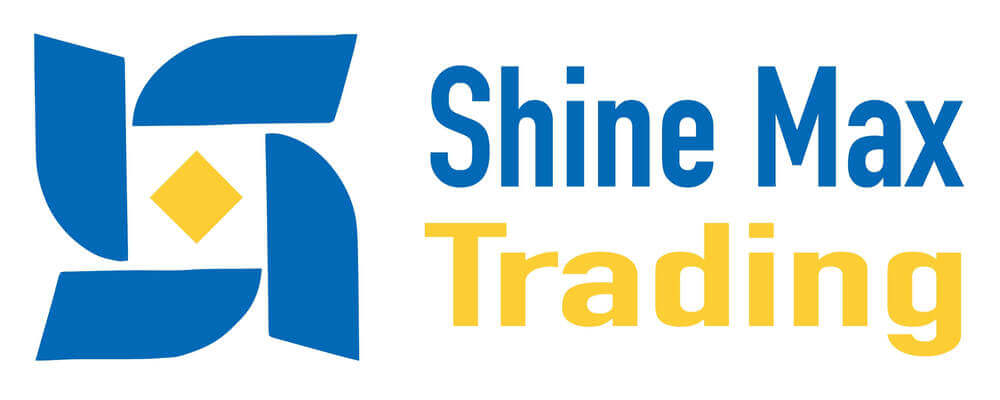
Escalating Middle East tensions and cooling US economic data propelled gold to a one-week high, while stock markets rallied on AI optimism and the US dollar weakened. Oil prices saw slight profit-taking, as Trump indicated a preference to avoid further co
On Friday (Beijing time, June 13th), spot gold is trading around 3384.74, with gold prices hitting a one-week high on Thursday, boosted by escalating Middle East tensions and cooling US economic data fueling renewed bets on Federal Reserve interest rate cuts. US crude oil is trading around $68.50/barrel, with oil prices closing slightly lower on Thursday as traders took profits after the previous day's more than 4% surge. Trump said on Thursday that an Israeli strike on Iran is "very possible," but he added that he would not call it imminent and leans towards avoiding conflict.
Daily Key Focus
Stock Market
The S&P 500 index closed higher on Thursday, as Oracle's strong earnings outlook boosted optimism about artificial intelligence (AI), outweighing concerns about Middle East tensions and Boeing's decline.
Oracle surged 13.3%, reaching a record high, after the cloud service provider raised its annual revenue growth forecast due to strong demand for AI-related services. Tech giants Microsoft, Nvidia, and Broadcom all gained more than 1%.
Art Hogan, Chief Market Strategist at B. Riley Wealth, stated that Oracle is another piece in the mosaic of AI capital expenditures and the continuous demand for more computing power, which precisely drives the AI revolution. When the wind blows in this direction, you will certainly see key companies like Microsoft and Nvidia also get a boost.
Boeing fell nearly 5%, after an Air India Boeing 787-8 Dreamliner en route to London crashed shortly after taking off from Ahmedabad, killing over 240 people. Signs of escalating Middle East tensions also weighed on global markets.
US President Donald Trump said on Wednesday that US personnel are withdrawing from the Middle East because it could be a "dangerous place," and the US will not allow Iran to possess nuclear weapons. US and Iranian officials are scheduled to hold the sixth round of nuclear talks in Oman on Sunday.
The S&P 500 index climbed 0.38% to close at 6045.26 points. The Nasdaq index rose 0.24% to 19662.49 points; the Dow Jones Industrial Average rose 0.24% to 42967.62 points.
A total of 23.5 billion shares were traded on US exchanges, a relatively high volume compared to the average daily volume of 18 billion shares over the previous 20 full trading days.
Among the S&P 500's 11 sectors, eight rose, with the utilities sector leading the gains, up 1.26%, followed closely by the information technology sector, up 1.01%.
As gold prices hit a one-week high, shares of US-listed gold mining companies also rose. Newmont Mining gained 4.9%, Harmony Gold rose 4.1%, and AngloGold Ashanti climbed 6.4%.
Weaker-than-expected producer price data and higher initial jobless claims hinting at a softer labor market helped ease investor concerns about tariff-induced price pressures, while also strengthening expectations for Federal Reserve interest rate cuts.
According to CME Group's FedWatch tool, traders are pricing in a 60% chance of a 25-basis-point rate cut by the Fed before September.
Goldman Sachs lowered its probability of a US recession from 35% to 30%, as uncertainty over Trump's tariff policies eased.
Gold Market
Gold prices hit a one-week high on Thursday, boosted by escalating Middle East tensions and cooling US economic data fueling renewed bets on Federal Reserve interest rate cuts. Spot gold rose 0.9% to $3383.22 per ounce, its highest level since June 5th. US gold futures closed 1.8% higher at $3402.4.
Peter Grant, Vice President and Senior Metals Strategist at Zanier Metals, said gold gained for a second straight day, mainly due to increased geopolitical risks. If gold breaks above $3400 again, it will still encounter minor resistance at $3417 and $3431, but will likely eventually break through to a new historical high.
US President Trump said the US is moving personnel out of the Middle East because it "could be a dangerous place." Iranian Defense Minister Aziz Nasirzadeh also said on Wednesday that if Iran is struck, it will retaliate by striking US military bases in the region.
Additionally, data showed that US producer prices in May rose less than expected. Initial jobless claims remained elevated last week, indicating a continued steady slowdown in the labor market.
Traders are pricing in an 80% chance of a Fed rate cut in September, with a second cut as early as October, compared to December before the data release.
Spot silver rose 0.1% to $36.25 per ounce, having touched its highest since 2012 on Monday. Grant said that supported by years of supply deficits and renewed technical strength, silver appears poised to hit $40 if it breaks the $38 mark.
Platinum rose 2.8% to $1291.09 per ounce, hovering near a more than four-year high; palladium fell about 2% to $1058.08 per ounce.
Oil Market
Oil prices closed slightly lower on Thursday, as traders took profits after the previous day's more than 4% surge. Oil prices rose on Wednesday due to concerns that worsening Middle East tensions would disrupt oil supplies.
Brent crude futures closed down 0.6% at $69.36 per barrel. US crude futures fell 0.2% to close at $67.97 per barrel.
US President Trump said on Thursday that an Israeli strike on Iran is "very possible," but he added that he would not call it imminent and leans towards avoiding conflict.
The earlier US decision to withdraw personnel from the Middle East caused both benchmark crude prices to surge more than 4% on Wednesday, reaching their highest levels since early April.
Alex Hodes, Energy Analyst at StoneX Energy, said that from several technical indicators, the surge put the market into overbought territory, so a brief pullback may be needed.
According to officials from both countries and Omani mediators, US and Iranian officials are scheduled to hold the sixth round of talks in Oman on Sunday regarding Tehran's uranium enrichment program.
Trump has repeatedly threatened to strike Iran if nuclear talks fail to reach a deal. Tehran insists its nuclear activities are for peaceful purposes and has said it would retaliate by striking US bases in the region if Iran is attacked.
"For the oil market, a closure of the Strait of Hormuz would be an absolute nightmare," said Arne Rasmussen, an analyst at a global risk management firm, in a LinkedIn post.
He added: "If Iran were to block this narrow choke point, it could affect up to 20% of global oil shipments."
JPMorgan Chase stated that if the Strait of Hormuz were to close, oil prices could surge to $120-$130 per barrel, a scenario the bank considers serious but with a low risk of occurring.
Forex Market
The dollar fell sharply on Thursday, as weaker-than-expected US inflation data for May suggested the Federal Reserve might resume cutting interest rates sooner. Safe-haven Japanese yen and Swiss franc were boosted by escalating Middle East tensions.
The euro rose against the dollar to nearly a four-year high. The dollar fell to a two-month low against the Swiss franc and to about a one-week low against the Japanese yen.
Data showed that the US Producer Price Index (PPI) in May rose less than expected month-on-month, suppressed by lower service prices such as airline tickets. This report weighed on the dollar. Wednesday's data also showed cooling inflation, with the US Consumer Price Index (CPI) rising less than expected.
Vassili Serebriakov, a forex analyst at UBS Group, said that although he noted US economic growth appeared to be slowing, inflation data had not yet shown the impact of higher tariffs.
Serebriakov stated, "We have priced in two rate cuts by the Fed this year, whereas last week it was less than two. These data are considered potentially creating room for the Fed to cut rates sooner or more."
The futures market tracking the Fed's policy rate increased bets on two consecutive rate cuts starting in September. Prior to the data release, the market was betting on a September cut and another in December.
With both US producer and consumer price data in May coming in weaker than expected, Nomura revised its forecast for the core Personal Consumption Expenditures (PCE) price index gain from 0.349% before the PPI release to 0.169%. This would push the three-month annualized core PCE inflation rate down to 1.52%, its lowest since November 2020.
"Three consecutive soft readings in monthly core PCE inflation suggest a recent deceleration in core inflation trends," Nomura wrote in a research note.
Other data also showed that US initial jobless claims remained flat at an elevated level last week, indicating a continued steady slowdown in labor market conditions.
Investors rushed into safe-haven assets, with geopolitical risks taking center stage. Previously, US President Trump said he was moving some US personnel out of the Middle East, given that "the Middle East could be a dangerous place," and that Washington would not allow Iran to develop nuclear weapons.
Analysts pointed out that the dollar is a key barometer reflecting trade dialogue sentiment, while geopolitical instability prompts investors to buy the Swiss franc and Japanese yen. In afternoon trading, the dollar fell over 1% against the Swiss franc to 0.8114 Swiss francs, having earlier dropped to 0.8104, its lowest since April 22. The dollar fell 0.7% against the Japanese yen to 143.59 yen, after touching a one-week low earlier. The euro briefly touched its highest level since October 2021 at $1.1632 against the dollar, ending the New York session up 0.8% at $1.1576.
Some analysts said the euro also gained support from a hawkish European Central Bank, which hinted that its year-long easing cycle would pause once inflation finally returns to its 2% target.
On trade, Trump said he was open to extending the July 8 deadline for completing dialogues with other countries. But he added that the US would send letters to dozens of other countries in the coming weeks, clarifying trade terms that these countries can either accept or reject.
Some investors pointed out that this keeps the risk of significant US import tariff hikes on July 9 alive, which is a negative factor for the dollar. The dollar index fell 0.5% to 97.95, having earlier touched 97.786, its lowest since March 2022.
-
1Micro-Trading Explained: A New Trend in Low-Threshold Investment34
-
2How to Go Long in Micro Trading: A Comprehensive Guide23
-
3Basic Questions22
-
4Fund Management22
-
5Education and Support22
-
6Other Questions22
-
7Account Management21
-
8Platform Benefits21
-
9Risk and Security19
-
10Trading Operations17

















